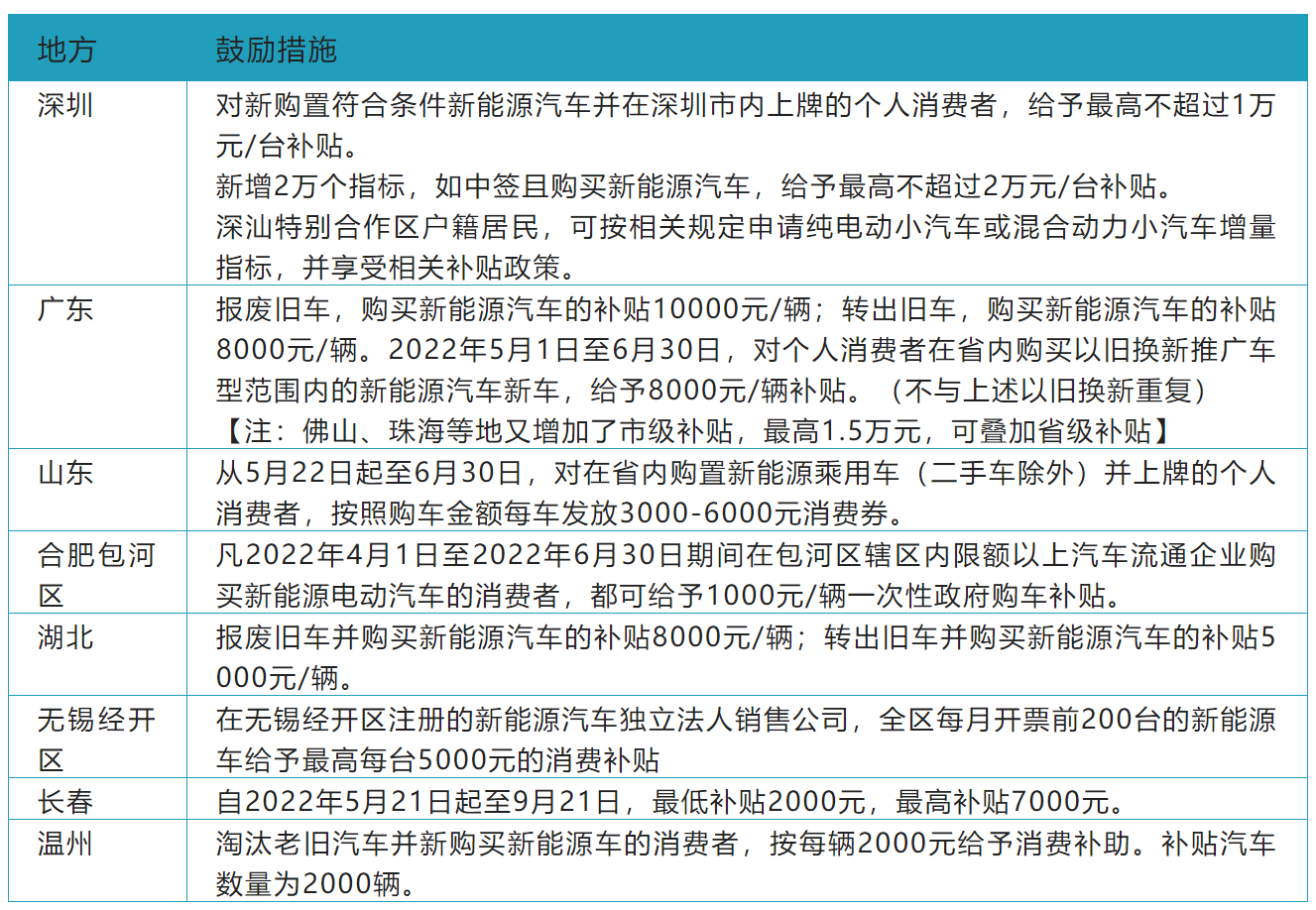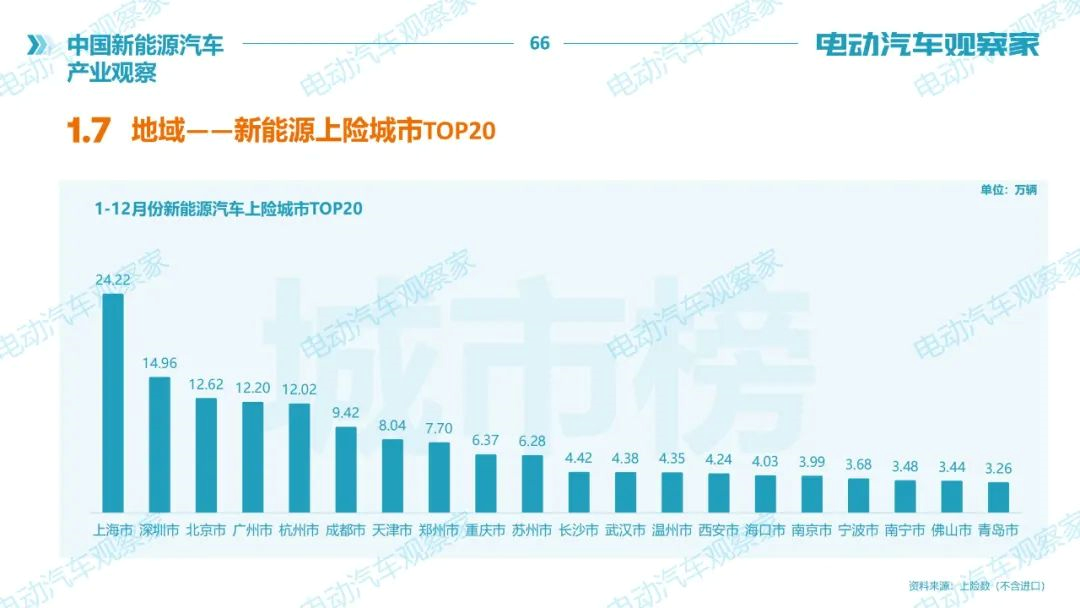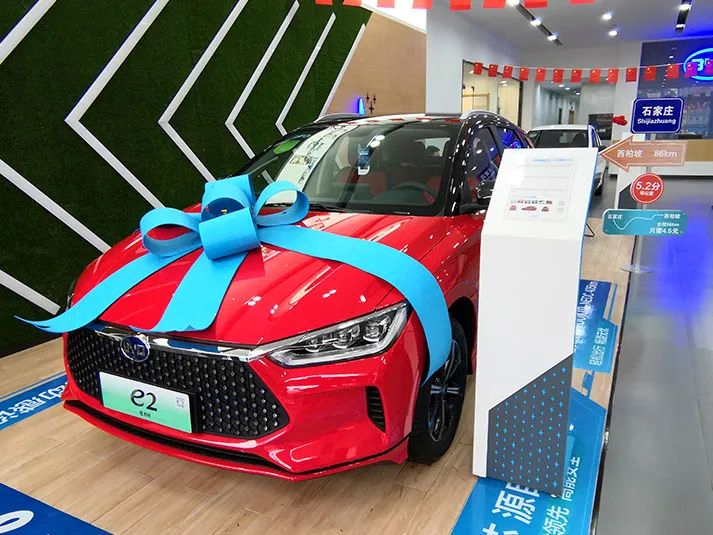Author | Kaijun Qiu
Editor | Kaijun Qiu
Shenzhen’s highest subsidy is 20,000 yuan; Guangdong’s is 8,000 yuan; Hubei’s old car scrappage scheme offers an 8,000 yuan subsidy for purchasing new energy vehicles; Wenzhou’s old-for-new policy offers a 2,000 yuan subsidy.
Under the epidemic, local governments are providing substantial subsidies for the consumption of new energy vehicles to stimulate consumption. Local subsidies for new energy vehicles, once almost extinct, have reappeared on a large scale.

Previously, the central supervisory authorities had instructed local authorities to cancel subsidies for new energy vehicles. Some regions, wishing to support local enterprises, could only do so secretly, with limited scope or duration. But times have changed. In the face of the COVID-19 pandemic and sluggish consumption, the central government encouraged consumption and explicitly supported the consumption of new energy vehicles. Therefore, this round of local government subsidies for new energy vehicles is legitimate.
The beneficiaries of this round of local subsidies are, of course, local enterprises. BYD in Shenzhen, EA and Xpeng in Guangzhou, Dongfeng and Voyah in Wuhan, and other enterprises are bound to benefit.
So, will all regions of the country embark on the road to reviving local subsidies?
Central policies lead the way
New energy vehicles were originally promoted by local cities, and of course, local subsidies were essential.
From the 25 cities that participated in the “Thousand Electric Vehicles in Ten Cities” program from 2009 to 2012, to the 88 demonstration cities from 2013 to 2015, and to the initial years of the phase of full-scale promotion from 2016 to 2020, local subsidies were paired with central subsidies at a ratio of 1:1 and subsequently reduced to half.
At the end of March 2019, when the subsidy policy was announced for that year, it was explicitly stated that local governments would no longer provide purchase subsidies for new energy vehicles (except for new energy buses and fuel cell vehicles), but would instead use them to support infrastructure “shortcomings” such as charging (hydrogenation) and supporting operation services. Moreover, “if local governments continue to provide purchase subsidies, the central government will correspondingly reduce its fiscal subsidies.”
At that time, the main concern of the supervisory authorities was to “create a fair environment”. Local subsidies are often linked to local protectionism, which is not conducive to the promotion of quality products.
Since then, local subsidies have been widely cancelled.
However, as of now, the impact of the epidemic on consumption is beyond doubt. The central government has made every effort to promote consumption recovery, and new energy vehicles are undoubtedly among the encouraged industries. They have also been mentioned repeatedly in state-level policies.
On April 13, the State Council executive meeting pointed out that to expand consumption in key areas, encourage bulk consumption such as automobiles and home appliances, and no new restrictions on automobile purchases should be imposed. Moreover, for areas that have already implemented restrictions, the quota for automobile increments should be increased gradually. Support the consumption of new energy vehicles and the construction of charging piles.On April 25th, the General Office of the State Council released the “Opinions on further releasing consumption potential and promoting the sustained recovery of consumption,” pointing out that stabilizing and increasing mass consumption of automobiles and other goods should be promoted, and that local governments should not impose additional restrictions on automobile purchases. Those regions that have implemented restrictions should gradually increase the volume of new car licenses and relax restrictions on the qualifications of car buyers. The “Opinions” also expressed support for the accelerated development of new energy vehicles and encouraged regions with the conditions to promote the use of new energy vehicles in rural areas.
The most recent government pronouncement came from the nationwide teleconference held by the State Council on May 25th to stabilize the national economy. The conference decided on implementing 33 measures in six categories to boost the economy. Policies related to the automobile industry include: CNY 90 billion in loans from central SOEs, extension of interest and principal repayments for half a year for truck loans through cooperation between banks and enterprises, and phased reductions of CNY 60 billion in purchase taxes on some passenger vehicles.
Although these three policies did not clearly provide opinions on local subsidies for new energy vehicles, the message of “supporting new energy vehicle consumption” sets a tone for the provinces.
Local Governments Follow with Subsidies
Good news for new energy vehicle consumption was reported in Shenzhen on May 26th.
That day, the Shenzhen municipal government issued “Several Measures to Promote the Continued Recovery of Consumption,” offering a subsidy of up to CNY 10,000 per vehicle to individual consumers who meet the conditions and register new energy vehicles in Shenzhen. In addition, the policy also adds 20,000 ordinary passenger car licenses, and if the winner of a new car license buys a new energy car, they will receive a subsidy of up to CNY 20,000 per vehicle.
Undoubtedly, this is a very generous policy.
More generous policies exist in other cities in Guangdong province.
Firstly, Guangdong’s “Several Measures to Further Promote Consumption” issued on April 27th stipulate: the scrapping of old cars and purchase of new energy cars will receive a subsidy of CNY 10,000 per vehicle; transferring out old cars and buying a new energy car will receive a subsidy of CNY 8,000 per vehicle. If a new energy vehicle purchased lies within the scope of the new car purchase, an addition subsidy of CNY 8,000 per vehicle will be granted.
Secondly, on this basis, cities such as Foshan and Zhuhai have added more favorable policies.
For example, Foshan Nanhai plans to allocate CNY 50 million in subsidies on new energy vehicle consumption, with a maximum subsidy of CNY 15,000 per vehicle, which can also be combined with provincial subsidies, totaling as much as CNY 23,000.
In addition to Shenzhen and Guangdong, other regions such as Hubei, Shandong, Wuxi, Wenzhou, and Changchun have also introduced automobile consumption stimulus policies, including those exclusive to or including new energy vehicles.
Furthermore, unrelated to the epidemic, many regions support the promotion of new energy vehicles and provide charging subsidies. In Guangxi and Hainan, for example, subsidies are offered for new energy vehicle purchases.# Will subsidies become a standard practice for local governments?
Although there is no national policy for automobile subsidies, new energy vehicle subsidies will still be implemented in a few places this year. However, it is unclear whether additional subsidies will be provided, as they may be included in existing urban subsidy policies or endorsed to encourage companies to offer preferential treatment.
Cities offering local subsidies will provide their respective companies with significant benefits. Companies such as Bytedance in Shenzhen, Aiways and Xpeng in Guangzhou, and Dongfeng and Voyah in Wuhan will undoubtedly benefit from this, especially Bytedance and Aiways.
Will subsidies become standard practice for local governments?
Electric Car Observer does not believe that more cities will offer subsidies for new energy vehicles. There are three prerequisites for cities to enact powerful local subsidies for new energy vehicles: first, a robust local economy; second, a powerful new energy vehicle company within the locality; and third, no significant traffic congestion issues in the area.
Comparing this criteria to reality, few cities would be eligible for subsidies. Take Beijing and Shanghai for example, regardless of their financial prowess and corresponding companies, they remain sensitive to local traffic congestion issues. Beijing has limited vehicle purchases historically and Shanghai “limits external vehicles” for the same reason.
Sales of new energy vehicles in the top 20 cities in China in 2021 are shown below.

Regarding cities with less severe traffic congestion issues, many of them already have significant financial pressure and may not be able to offer high subsidies. Against the background of the central and local governments promoting consumption, only minor supporting policies such as consumer vouchers or similar measures may be implemented.
Will national renewable energy subsidies last until 2023?
The subsidy policy for new energy vehicles was expected to expire at the end of 2022; however, there are recent rumors suggesting that the Chinese government is negotiating an extension of the policy with automakers.
Reuters reported that some relevant insiders disclosed that the Chinese government is in talks with automobile manufacturers about extending subsidies for electric vehicles that were originally supposed to expire in 2022.
Some companies are calling for an extension of the subsidy. During the “Two Sessions” of the National People’s Congress in 2022, the Chairman of Guangzhou Automobile Group, Qinghong Zeng, called for a one- to two-year delay on national subsidies.But according to the “Electric Vehicle Observer”, national subsidies for new energy vehicles will not be extended. This round of national subsidy was originally planned to end at the end of 2020. However, due to factors such as the decline in sales in 2019 and the impact of the epidemic, it was extended for two more years. It would be illogical to extend it further given the extension of two years. In addition, the national financial pressure is also high, and it is difficult to maintain such huge subsidies.
However, a few high-level intelligent connected vehicles, hydrogen fuel cell vehicles, and especially intelligent connected vehicles, are expected to continue to receive subsidies. On April 21, the Ministry of Industry and Information Technology issued a notice on organizing the application of the 2022 New Information Consumption Demonstration Project, according to which, the intelligent connected vehicle consumption project can also be applied for and receive corresponding support, which also indicates the attitude of the Ministry of Industry and Information Technology.
This article is a translation by ChatGPT of a Chinese report from 42HOW. If you have any questions about it, please email bd@42how.com.
